Guest post by Bret Heddleston, Print Periodicals Specialist & Post Coordinator
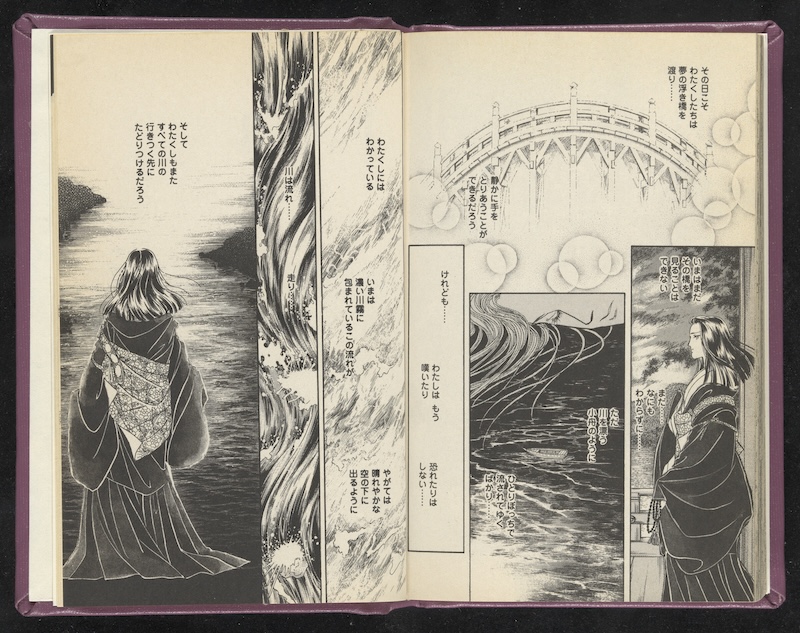
May is Asian and Pacific Islander American Heritage month. Many UVA Library employees discovered the richness of this heritage through our books. For me, it happened in 2018 while we were inventorying our collection. Deep in the Old Stacks on the first floor, I found the six volumes of “The Tale of Genji,” a medieval Japanese novel by Murasaki Shikibu (translated by Arthur Waley). It was the evocative title of the sixth book in the collection that first grabbed my attention: “The Bridge of Dreams.”
We hope you will also make a similar discovery through our list!
Recommendations from Kiowa Hammons, Director of Copyright & Scholarly Communication Services
Japanese photography in the 1960s took a provocative and gritty turn, focusing on the emotional power and raw environment of post-WWII Japan. Driven by the independent small-press journal “Purovōku” (Provoke), contributors like Masahisa Fukase, Eikoh Hosoe, Daido Moriyama, and Shomei Tomatsu (among others), utilized camera distortion, high-contrast black and white, and deconstructionist experimentation in the dark room to produce images that followed the journal’s aesthetic of “Are, Bure, Boke” (rough, blurred, and out of focus). Although “Provoke” published just three issues between 1968-1969, the impact of these works reverberates to the present.
Here are some great books to check out if interested in learning more about “Provoke” and the photographers:
 “Provoke: Between Protest and Performance: Photography in Japan 1960-1975” Edited by Matthew Witkovsky et al. (Steidl, 2016)
“Provoke: Between Protest and Performance: Photography in Japan 1960-1975” Edited by Matthew Witkovsky et al. (Steidl, 2016)
This book accompanies the first exhibition ever to be held on “Provoke” magazine and its creators. Illuminating the various uses of photography in Japan at the time, the catalogue focuses on selected projects undertaken between 1960 and 1975 that offer a strongly interpretative account of currents in Japanese art and society at a moment of historical collapse and renewal. (From the publisher’s website.)
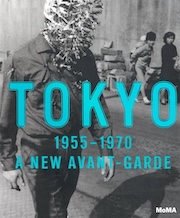 “Tokyo, 1955-1970: A New Avant-Garde” by Doryun Chong et al. (Museum of Modern Art, 2012)
“Tokyo, 1955-1970: A New Avant-Garde” by Doryun Chong et al. (Museum of Modern Art, 2012)
“Tokyo 1955–1970: A New Avant-Garde” explores the extraordinary convergence of artists and other creators in Japan’s capital city during the radically transformative postwar period. Examining works from a range of media — painting, sculpture, photography, drawing, printmaking, video and film, as well as graphic design, architecture, musical composition and dance — this is the first publication in English to focus in depth on the full scope of postwar art in Japan. (From the publisher’s website.)
 “Ravens” by Masahisa Fukase (MACK, 2017)
“Ravens” by Masahisa Fukase (MACK, 2017)
Consistently proclaimed as one of the most important photobooks in the history of the medium, “Ravens” by Japanese photographer Masahisa Fukase was first published in 1986 and the two subsequent editions were both short print runs that sold out immediately. This bilingual facsimile of the first edition contains a new text by founder of the Masahisa Fukase Archives, Tomo Kosuga. His essay locates “Ravens” in Fukase's wider work and life and is illustrated with numerous recently discovered photographs and drawings. (From the publisher’s website.)
 “Daido Tokyo: Daido Moriyama = 大道東京: 森山 大道” Edited by Adeline Pelletier (Fondation Cartier pour l'art contemporain, 2016)
“Daido Tokyo: Daido Moriyama = 大道東京: 森山 大道” Edited by Adeline Pelletier (Fondation Cartier pour l'art contemporain, 2016)
Daido Moriyama (born 1938 in Ikeda, Japan) invented a new visual language with his work beginning in the mid-1960s. Frenetic and tormented, it depicted a reality that was grainy, blurry, and out-of-focus. Witness to the spectacular changes that transformed postwar Japan, his photographs express the contradictions in a country where age-old traditions persist within a modern society. Often blurred, taken from vertiginous angles, or overwhelmed by close-ups, they show a proximity to and a particular relationship with the subject.
Published to coincide with an exhibition at the Fondation Cartier, “Daido Tokyo” includes many previously unpublished photographs (as well as those featured in the exhibition), and an interview with the artist. (From the publisher’s website.)
Recommendations from Bret Heddleston, Print Periodicals Specialist
 “Grass on the Wayside (Michikusa): A Novel” by Sōseki Natsume (University of Chicago Press 1969)
“Grass on the Wayside (Michikusa): A Novel” by Sōseki Natsume (University of Chicago Press 1969)
Soseki is the most celebrated of modern Japanese novelists, and my favorite too; I have always found his characterization subtle and psychologically perfect. In his only autobiographical novel, he will describe intractable and exhausting familial situations, but with so light a touch, with such self-knowledge and implicit humor — that I must keep reading. You feel all of the tension between his desire to avoid them, and to dutifully meet their needs; his desire to love his wife and their mutual contempt for each other; his desire to accomplish something in his life, and his entanglement in irreparable old relationships.
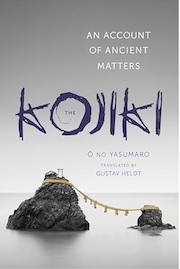 “Kojiki”, compiled by Ō no Yasumaro; translated by Gustav Heldt (Columbia University Press, 2014) or Donald Phillippi (Princeton University Press, 1968)
“Kojiki”, compiled by Ō no Yasumaro; translated by Gustav Heldt (Columbia University Press, 2014) or Donald Phillippi (Princeton University Press, 1968)
UVA’s Professor Heldt has provided the world with the most accessible (actually, the only accessible) translation of Japan’s mythological and legendary-historical dynastic epic. But since Professor Heldt’s was checked out at a key moment, I have spent more time working through the lavishly annotated, but relatively opaque older translation by Donald Phillippi. Far from a barren exercise, this struggle threw light on the alien landscape of Japanese antiquity and revealed the earliest written occurrence of themes of creation, loss and purity that are still prevalent in Japanese culture, and now in ours.
Recommendations from Keith Weimer, Librarian for History and Religious Studies
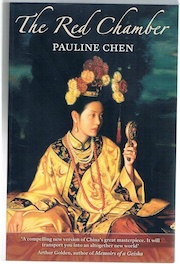 “The Red Chamber” by Pauline Chen (Vintage Books, 2012)
“The Red Chamber” by Pauline Chen (Vintage Books, 2012)
Pauline A. Chen’s novel, “The Red Chamber,” offers readers some exposure to a major classic of Chinese literature, “The Dream of the Red Chamber,” in a perhaps more accessible and secularized adaptation. (Note: “The Red Chamber” is not a retelling of the original, which runs to five lengthy volumes in the Penguin Classics translation by David Hawkes.) Chen’s novel presents relationships between the aristocratic Jia clan during the years when the Yongzheng Emperor succeeded to the throne (c. 1723), placing the Jias in danger. Not all the Jias nor their customs are sympathetic, but Chen tells a powerful story of family relationships and societal tensions, with underlying themes of love and loyalty.
 “Korea: A Very Short Introduction” by Michael Seth (Oxford University Press, 2020)
“Korea: A Very Short Introduction” by Michael Seth (Oxford University Press, 2020)
JMU historian Michael Seth’s “Korea: A Very Short Introduction” provides an excellent starting point for understanding the history of the peninsula, which its inhabitants have long viewed as one nation despite the division of recent decades. Seth describes state formation, the influence of China including the development of a rigid neo-Confucianism that dominated society from the 14th through the 19th centuries, the opening up to American trade and missionaries, and rapid modernization under Japanese conquest in the 20th century. North Korea recovered from the Korean War more quickly than the South, but the Kims opted for a closed dictatorship and North Korea quickly became impoverished after the 1980s. Seth left open questions about how South Korea’s authoritarian regime gave way in the 1980s to a more democratic civil society and how the military stepped back from power, but this was a strong introduction to the ancestral homeland of over two million Americans and a global economic and military power.
Recommendations from John Presley, Night Manager, Main Library
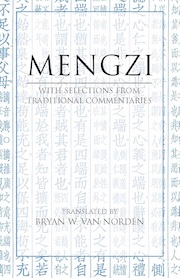 “Mengzi: With selections from traditional commentaries” translated, with Introduction and Notes by Bryan Van Norden (Hackett, 2008)
“Mengzi: With selections from traditional commentaries” translated, with Introduction and Notes by Bryan Van Norden (Hackett, 2008)
Modernization in many countries where the name of Confucius was once held in esteem often resulted in a violent revaluation of all values, and with them a loss of esteem for the sage. That period has bequeathed to us a collection of stereotypes which are said to constitute Confucianism and are common anywhere from America to South Korea. If you have ever asked yourself what Confucianism might actually be, van Norden’s translation of Mengzi (Mencius) is one of the best places to begin. Including significant extracts from the Song dynasty commentary of Zhu Xi, this book is an introduction to the tradition of Confucianism as it developed over time through its most influential luminary. From the famous opening of “Why must your Majesty speak of profit,” to the considerations of the sprouts of virtue in each human being, it is certain to prove surprising to any yet uninitiated into the depths of its profundity and humanity.
 “Korea’s Place in the Sun: A Modern History” by Bruce Cumings (Norton 2005)
“Korea’s Place in the Sun: A Modern History” by Bruce Cumings (Norton 2005)
Bruce Cumings once remarked that Korea is a place which most Americans don’t think they need to spend five minutes thinking about in their lifetime. What has unfolded over the latter half of the 20th century is a tragic dynamic wherein American soldiers and statesmen who belligerently refuse to understand anything about Korea have been dictating its political reality while many average Koreans are far better informed about American politics and life. One needs only to turn on any South Korean news program to end up learning quite a bit about current events in the United States. How did this happen? Cumings’ powerful one volume history, often moving and horrifying in equal measure, will attempt to answer this question. “Korea’s Place in the Sun” constitutes one of the few accessible English language histories of the Korean peninsula, but even if there were many more it would still be one of the very best.
Recommendation from Shannon McCullough, Science & Engineering Research Librarian
 “Everything I Never Told You” by Celeste Ng (Penguin Books, 2015)
“Everything I Never Told You” by Celeste Ng (Penguin Books, 2015)
“Everything I Never Told You”, Celeste Ng’s debut novel, is a compelling novel with complex characters and themes of identity, belonging, secrecy, and family dynamics. The story centers around the Lee family, a mixed-race Chinese American family in the 1970s living in a college town in Ohio. Providing a window into what that era might have been like for a family like theirs, Ng masterfully explores each character’s desire to feel belonging and inclusion within their own family and community. The narrative deftly exposes how characters’ identities mediate their ability to express themselves and ultimately pursue their dreams in an incredibly relatable way. A page-turner, the author paces this novel so that you just want to keep reading.
